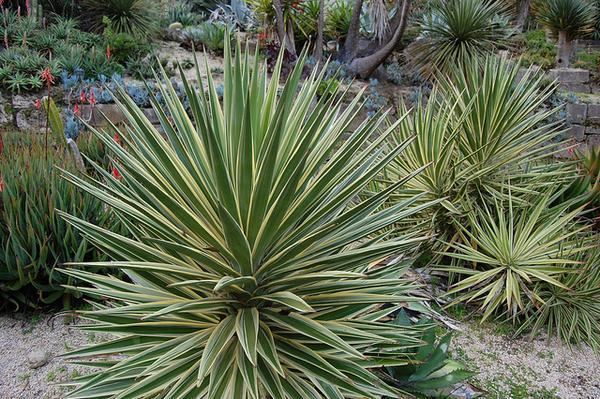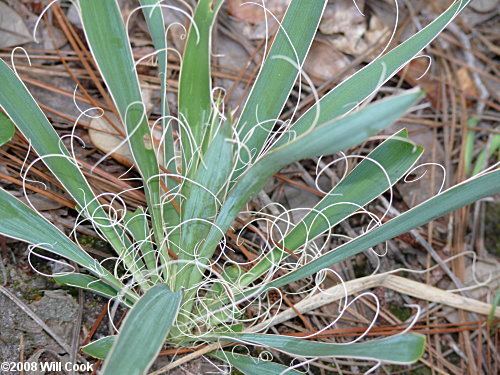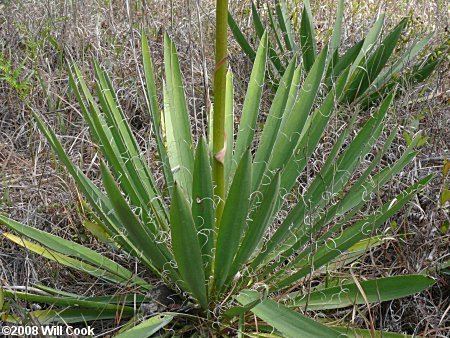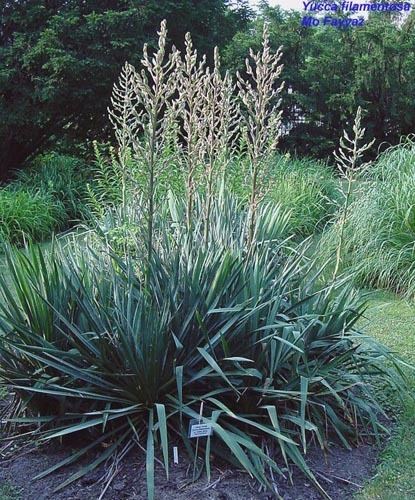Clade Monocots Rank Species | Clade Angiosperms Subfamily Agavoideae Higher classification Yucca | |
 | ||
Similar Yucca, Yucca gloriosa, Yucca aloifolia, Spineless yucca, Yucca rostrata | ||
Survival plants yucca filamentosa identification and uses
Yucca filamentosa is a species of flowering plant in the family Asparagaceae native to the southeastern United States from southeast Virginia south to Florida, and as far west as Louisiana. They have become naturalized north along the eastern seaboard to southern Rhode Island and into parts of the lower Midwest. They are normally hardy in USDA hardiness zones of 5 to 9. Most commonly found in sandy soils, especially in beach scrub and dunes, but also in fields, barrens, and rocky slopes, though it grows well also in silt or clay soils. Its common names include Adam's needle, common yucca, Spanish bayonet, bear-grass, needle-palm, silk-grass, and spoon-leaf yucca. The species is also reportedly naturalized in France, Italy and Turkey.
Contents

Description

Usually trunkless, it is a multisuckering evergreen shrub with heads of 75 cm (30 in) long, filamentous, blue-green, strappy leaves. It is fully hardy, though in cultivation it benefits from a sheltered position away from winter winds. Y. filamentosa is readily distinguished from other yucca species by white, thready filaments along the leaf margins. Flower stems up to 3 m (10 ft) tall bear masses of pendulous cream flowers in early summer. They are pollinated by the yucca moth Tegeticula yuccasella.
Y. filamentosa is closely related to Yucca flaccida and it is possible they should be classified as a single species.
Cultivation

Y. filamentosa is widely cultivated in mild temperate and subtropical climates as a broadleaved evergreen plant. It needs full sun and a well-drained soil, preferring an acid or slightly alkaline pH range of 5.5 to 7.5. It develops a large, fleshy, white taproot with deep large lateral roots. Once planted and established, it is difficult to remove it as the deep roots keep sending up new shoots for many years. 'Bright Edge', a dwarf cultivar with yellow-margined foliage and creamy flowers tinged with green, has gained the Royal Horticultural Society's Award of Garden Merit.
Other cultivars include:

Other uses

The leaves, stems and roots of this plant can be used to stun fish. The Cherokee used it for this purpose.
Culturally in Florida, yucca filamentosa has been called the sentry plant (not to be confused with the similar-sounding century plant name for the same species) by the Spanish for hundreds of years. Traditionally this yucca gets planted, to stand watch under a daughter's window, with the intent on keep the boys out; hence the sentry, in sentry plant. Its formidable spikes and razor sharp leaves make it a very effective security measure. To-date, the yucca filamentosa is still planted with its daughter shielding properties in mind, while making a beautiful addition to the landscape. It is also planted under any window for the purpose of keeping people out, or sneaky children in. This defensive usage and the name sentry plant are also used for similar looking, spiny succulents such as Agave americana and Aloe vera.
